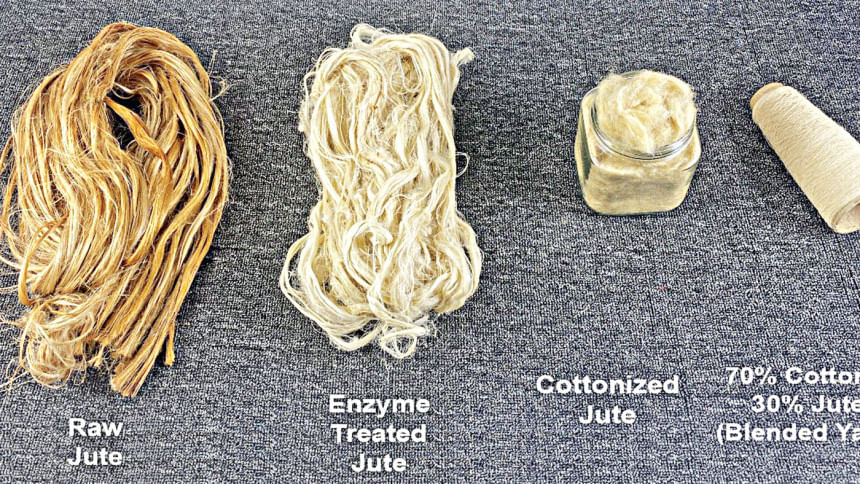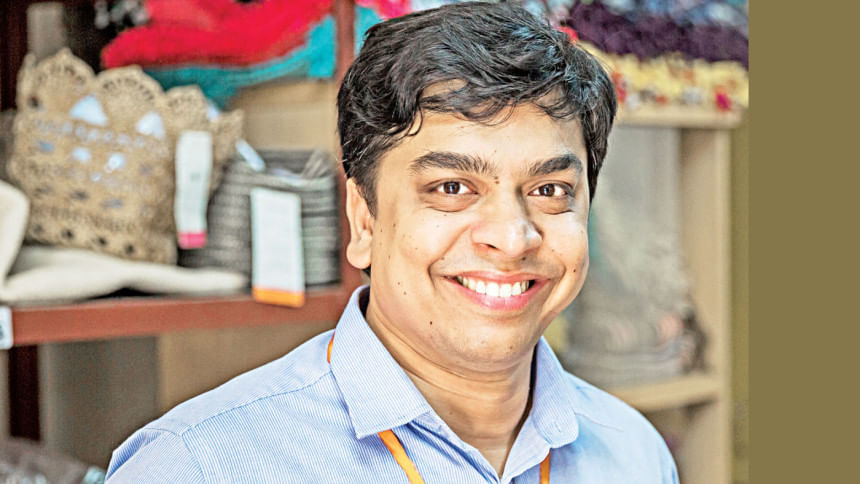A 10-cent story

"I only had Tk 8—around 10 cents—left in my wallet, which wasn't even enough for me to return from Gulshan to my small 10x14-feet office in Motijheel. I had to walk to the Nabisco Bus Stop, where the fare to my office was exactly Tk 8. As I boarded the bus, my factory manager called and said, 'Tomorrow, we will need Tk 1.4 million'. I assured him that we would arrange it, which we did, just as planned," said Md Tauhid Bin Abdus Salam, an alumnus of BGMEA University of Fashion & Technology (BUFT), and currently, the Managing Director of Classical Handmade Products BD Ltd. (CHP), recalling a day 17 years ago.
Back then, there were no Tk 1,000 notes, and every Tk 500 bill he invested mattered. Like many Bangladeshi entrepreneurs, Tauhid learned early that cash flow management is both an art and a survival skill.
"As a student, I received only Tk 30 a day," he said. "The round trip from Motijheel to BUFT cost Tk 28, leaving me with just Tk 2 in savings, which was hardly enough to start a company, especially back when a single mobile phone call cost Tk 4 per minute."
Yet, Tauhid refused to see obstacles as roadblocks. With a clear vision and unshakable resolve, he turned challenges into stepping stones on the path to entrepreneurial success.

Choosing a different path
"I was fortunate to be admitted to BUFT," continued Tauhid. "My childhood friend, Faiyead, and I spotted a two-page newspaper advertisement for BUFT's admission intake. The admission form cost Tk 400—the same amount of money my father had given me to buy a medical college admission form. I then convinced my father that the ready-made garment (RMG) sector, with over 5,000 factories, was struggling due to a lack of qualified professionals. I wanted to be a 'doctor' in this industry, where the field was wide open for innovative ideas."
Tauhid feels blessed to have found professors who saw his potential.
"At BUFT, Prof. Md Mahbubul Haque gave me my first job as a part-time lecturer, allowing me to earn around USD 10 per hour for working 60 hours a month," said Tauhid. "That income helped me save up around USD 20,000—enough seed capital for my first venture."
"Rita Madam—BUFT's former registrar—recommended me to a Dutch company, opening new doors. Leadership coach Quazi M Ahmed taught me that leadership, when done right, can transform companies, sectors, and even nations," added Tauhid. "Guidance from these leaders helped shape the entrepreneurial journey I was about to go on."
A conscious return to Bangladesh
Before starting his company, Tauhid had already secured US permanent residency—a pathway to a stable and comfortable life abroad. However, he chose not to settle in the US, having identified far greater opportunities in Bangladesh. He recognised the potential to serve a niche market and contribute meaningfully to the country's economy. This decision, rooted in a commitment to creating impact at home rather than pursuing personal comfort overseas, became the moral foundation of his entrepreneurial journey.
From RMG to jute
Tauhid's entrepreneurial venture began in 2008, when he established Classical Handmade Products BD Ltd. (CHP), starting a business producing rugs from cotton knit clips.
In its early days, CHP focused on building a steady market presence, driven by Tauhid's belief in sustainable craftsmanship and financial discipline. It was after the company's formation that Tauhid met Mahmudul Huq, the former Deputy Managing Director of Janata Jute Mills. Mahmud's deep knowledge of the jute sector and strategic insights inspired Tauhid to explore jute as a core material for CHP's product line. Their discussions—often centred on balancing innovation with profitability—helped guide CHP's gradual expansion from cotton-based products into high-value jute crafts.
Fueled by a shared passion for preserving traditional craftsmanship, CHP began a journey that would blend artistry with heritage. Its skill in crafting exquisitely designed, handmade pieces soon won the admiration of loyal customers, each creation telling its own story of culture and care.
Today, CHP has expanded beyond Bangladesh's borders, building a strong presence in multiple countries, including robust markets in Europe and the US. Serving discerning international home decor buyers, the company offers an extensive range of jute-based products—each reflecting unmatched quality, sustainable values, and a timeless elegance that endures.
Classical Handmade Products BD Ltd. has also created 6,700 direct and indirect employment opportunities.
In the broader jute sector, about 500,000 people are directly employed, and an additional 1 to 1.5 million people work in related areas, like farming, transportation, and marketing. The jute industry contributes approximately 1.4 percent to Bangladesh's Gross Domestic Product (GDP), as per figures from the Bangladesh Bureau of Statistics (BBS), Bangladesh Jute Board, and Bangladesh Jute Research Institute (BJRI).
Tauhid's vision for the jute sector going forward
According to Tauhid, the jute sector in Bangladesh needs a drastic transformation. His vision for this sector includes:
1. The use of good-quality seeds.
2. Genetically-modified seeds for different weather and seasons for multiple crops. That way, other desirable properties can be included in the crop.
3. No more water retting— a process of extracting jute fibres by submerging harvested jute stalks in water to decompose the surrounding tissues.
4. Buying green jute harvests from fields at a competitive price.
5. The jute stick should be separated by machine from green jute and collected in coils.
6. Enzyme treatments in big pools should treat the jute coil. Separating fibres will be faster and cheaper.
7. The processing cost should be around the same cost as buying jute fibres from farmers
8. We have to create a culture where the farmers should not do anything manual for retting. They should sell the jute from the fields as green crops. That should be the input for the jute industry. That is how cash subsidies in jute can be continued after 2026. Jute can be considered an agricultural input, not a processed commodity for industry.
9. Any wet processing, like bleaching, colouring, and cottonisation, should be done at a time. That way, the main cost of drying is incurred only once. This is the only way we can be competitive.
10. We need to change the culture of jute harvesting and the buying process, which is very difficult but not impossible.
11. We have to find a way to keep the jute price stable by taking responsibility from the farmers, who are facing challenges of high labour costs and a lack of a mechanised production process.
"Jute won't survive on twine and coarse fabric alone," said Tauhid. "It must enter the fashion and home textiles sector."
"To introduce jute in the fashion industry, we have to introduce innovation. Jute is hairy, its colour is boring, its colourfastness and washability are poor, as the shrinkage percentage is high, and it develops a smell after washing. It also develops mildew if there is higher moisture content. Perspiration and breathability are poor, which is why it is very warm. CHP solves all the above problems by enzyme wash, shortening the fibre into cotton length and using the right blending ratio," added Tauhid.
"Jute can only survive by getting a higher price from the export market. How to do that? Change the way we do jute business. It should be an input for industries where we can obtain a better price by modifying its properties, making it more fashionable, colourfast, softer, more comfortable, and sustainable. We cannot get a good price without telling the sustainability stories of jute. By polluting water, we also cannot claim sustainability," continued Tauhid. "Jute can be transformed into a sustainable material for the fashion and home textile industry. It is our own raw material—no need to import and no extra carbon footprint. This also means we are saving foreign currency, saving lead time, and reducing the trade deficit. At the end of the day, we will be able to save 1 percent of cotton imports in Bangladesh by replacing it with jute. That is my dream as a BUFTian. Let's do it!"
A grateful journey
"Beyond the accolades, what matters most is that we are building livelihoods, innovating for sustainability, and keeping alive a dream that began with just USD 20,000 in my pocket," said Tauhid.

 For all latest news, follow The Daily Star's Google News channel.
For all latest news, follow The Daily Star's Google News channel. 



Comments